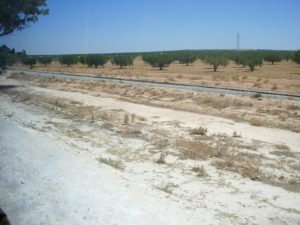The following is part of Angelus’ special reporting on the historic ordination of four new auxiliary bishops for the Archdiocese of Los Angeles Sept. 26, 2023.
They will be ordained as auxiliary bishops of Los Angeles — but they’ll hold titles to churches distant in time and space.
Albert Matta Bahhuth will be titular bishop of the Diocese of Vadesi in Numidia, an ancient kingdom in northern Africa. Matthew Gregory Elshoff, OFM Cap., will lay claim to the Church in Lamzella, also in Numidia. Brian Alan Nunes will possess authority over the Diocese of Kearney, Nebraska. And Slawomir Szkredka will hold keys to the church of Vicus Turris, another northern African town from the time of the Roman Empire.
Each of these places was once the administrative center of a Catholic diocese. Over time, however, the local Christian population declined or disappeared — or its center shifted to another city. The diocese was then suppressed.
Suppressed, but not destroyed. Its succession continued, and its title passed to the care of another bishop.
It is a convenient arrangement — because just as there are dioceses without active congregations, so there are bishops who are in need of a diocese.
There is no place in the Church for vagrant bishops. Ordinarily, a bishop exercises authority over a particular territory. He is the “ordinary” of a specific diocese. But the Church needs bishops for other purposes, too. Some serve in the Vatican. Others work as nuncios and diplomats throughout the world. Still others are auxiliary bishops in the service of an ordinary bishop or archbishop. All are bishops, and so they require a Church of their own, and so they are assigned “titular sees.”
A diocese that still exists legally, but not functionally, can become a titular see. And there are many, many of these. The official Vatican list runs for more than 200 pages, with as many as a dozen entries on each page.
Many names on the list represent churches that were displaced with the Arab invasions — and widespread imposition of Islam — that began in the seventh century in the Middle East and north Africa. Some of these represent major centers of early Christianity. In fact, all of the seven churches addressed by St. John in the Bible’s Book of Revelation eventually gained titular status, at least for a time: Ephesus, Smyrna, Pergamum, Thyatira, Sardis, Philadelphia, and Laodicea (see Revelation 1:11).
Each of those churches was founded by an apostle. Each had an impressive history and pedigree. According to tradition, the Blessed Virgin Mary and St. John lived in Ephesus, and St. Paul addressed one of his letters to the church there. John’s disciple St. Polycarp lived in Smyrna — and died there as a martyr. St. Melito lived in Sardis. Archeological excavations in all these places have yielded the ruins of large and beautiful churches.
The same goes for many of the titular churches from ancient Africa. Carthage was home to the great theologian Tertullian, and the mighty St. Augustine studied there. Its bishop was the renowned St. Cyprian — and so every titular bishop of Carthage is heir to this impressive legacy. St. Augustine’s birthplace, Thagaste, is also a titular see.
Carthage was a bustling port city. Thagaste was a sleepy rural town. Most of the suppressed sees probably fell somewhere in between. Many of these dioceses were smaller in membership than a typical U.S. parish.

A view of the countryside near Henchir-El-Djemel, Tunisia. The town is believed to be the site of the ancient Roman and Byzantine town of Vicus Turris, the center of a now-suppressed diocese of the same name. As auxiliary bishop, Slawomir Szkredka will hold the title of bishop of the Vicus Turris. (Wikimedia Commons/Jaume Ollé)
Nor is this all ancient history. The Diocese of Kearney, Nebraska — now the bailiwick of Bishop-elect Nunes — joined the list of titular sees as recently as 1995. It is one of many U.S. dioceses to make the roster. They include Grass Valley, California; Bardstown, Kentucky; Leavenworth, Kansas; Natchitoches, Louisiana; Walla Walla, Washington, and many others.
Many of the north African and west Asian sees declined because of dramatic historical circumstances: invasion, exile, persecution, or schism. The U.S. sees often vanished from sight because the Church bet on the wrong city to hold regional dominance. Who knew that Grass Valley would one day be eclipsed by Sacramento?
The Catholic Diocese of Allegheny, Pennsylvania, created in 1876, lasted only 13 years and had only one dedicated bishop — and its only bishop served little more than one year! It was Allegheny’s misfortune to begin life during the 19th century’s Great Depression. Carved out of the side of the Pittsburgh Diocese, its launch involved a re-allocation of debt (and general financial confusion) that was crippling to both sees. The territory was re-absorbed by the Pittsburgh Diocese in 1889.
Today, Allegheny is a titular see held by a retired auxiliary bishop in Newark. He inherited none of Allegheny’s debt, only its glory.
And so it will be for California’s new auxiliary bishops, as they take possession of their titles and take their place in a succession that stretches back to the apostles.

